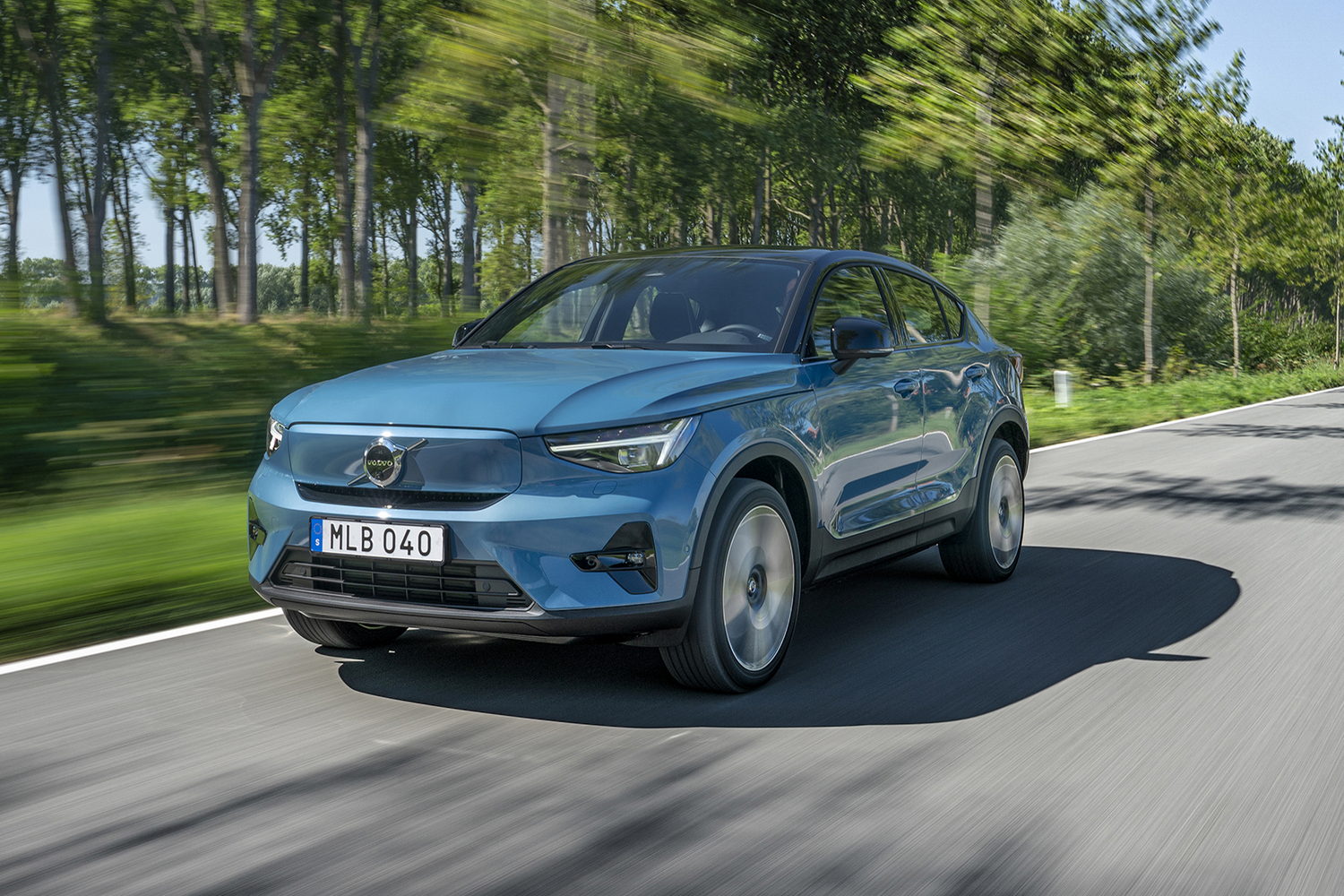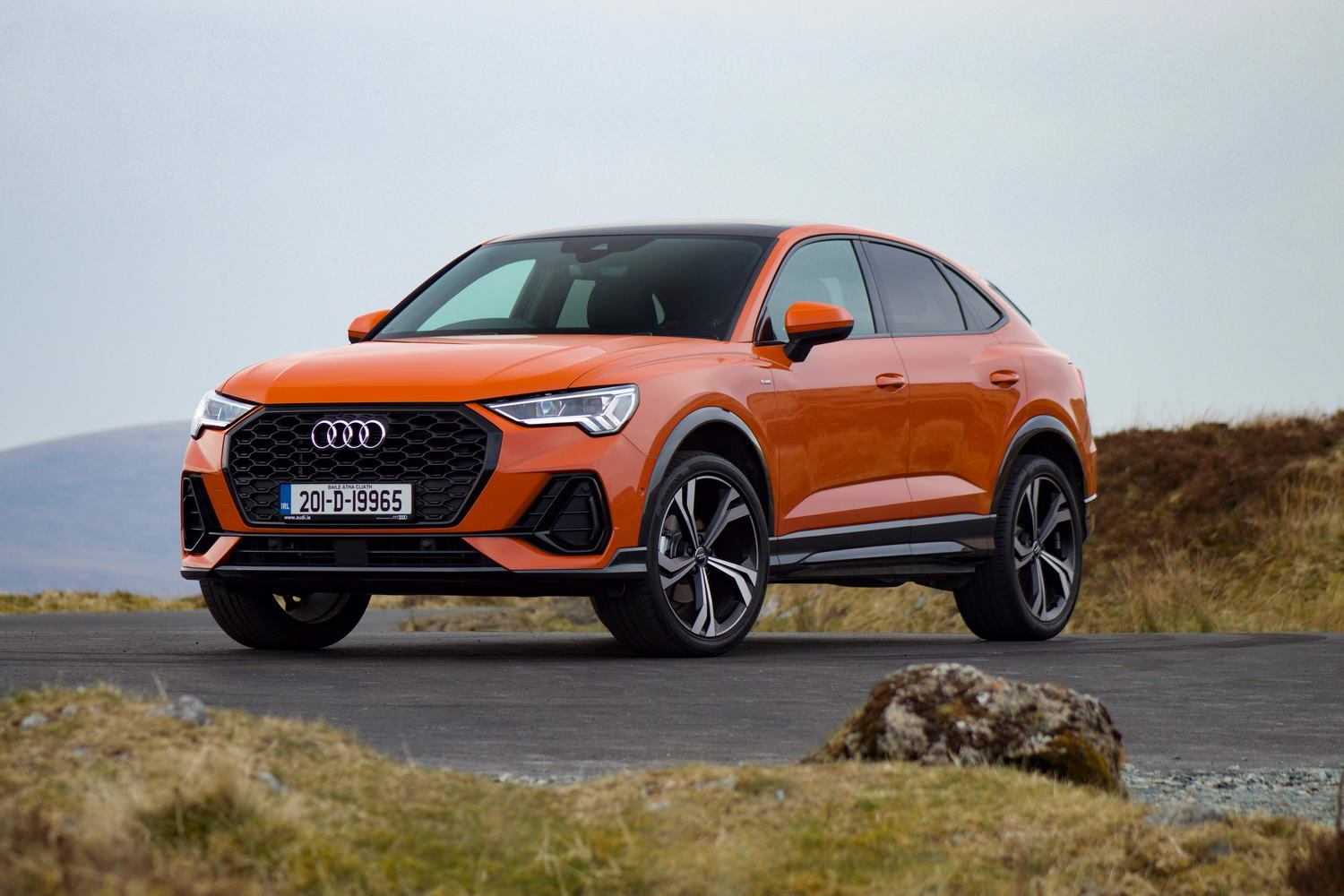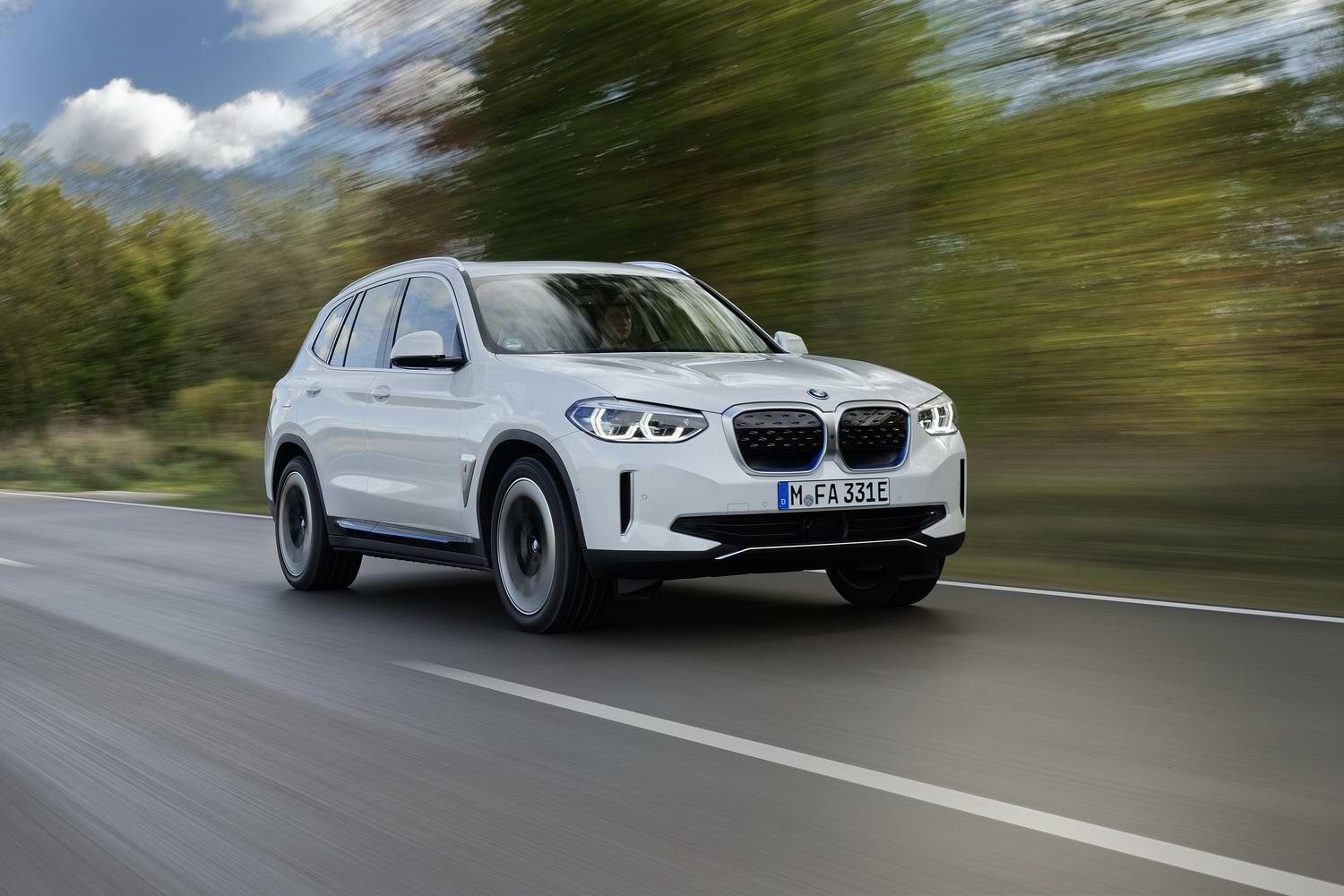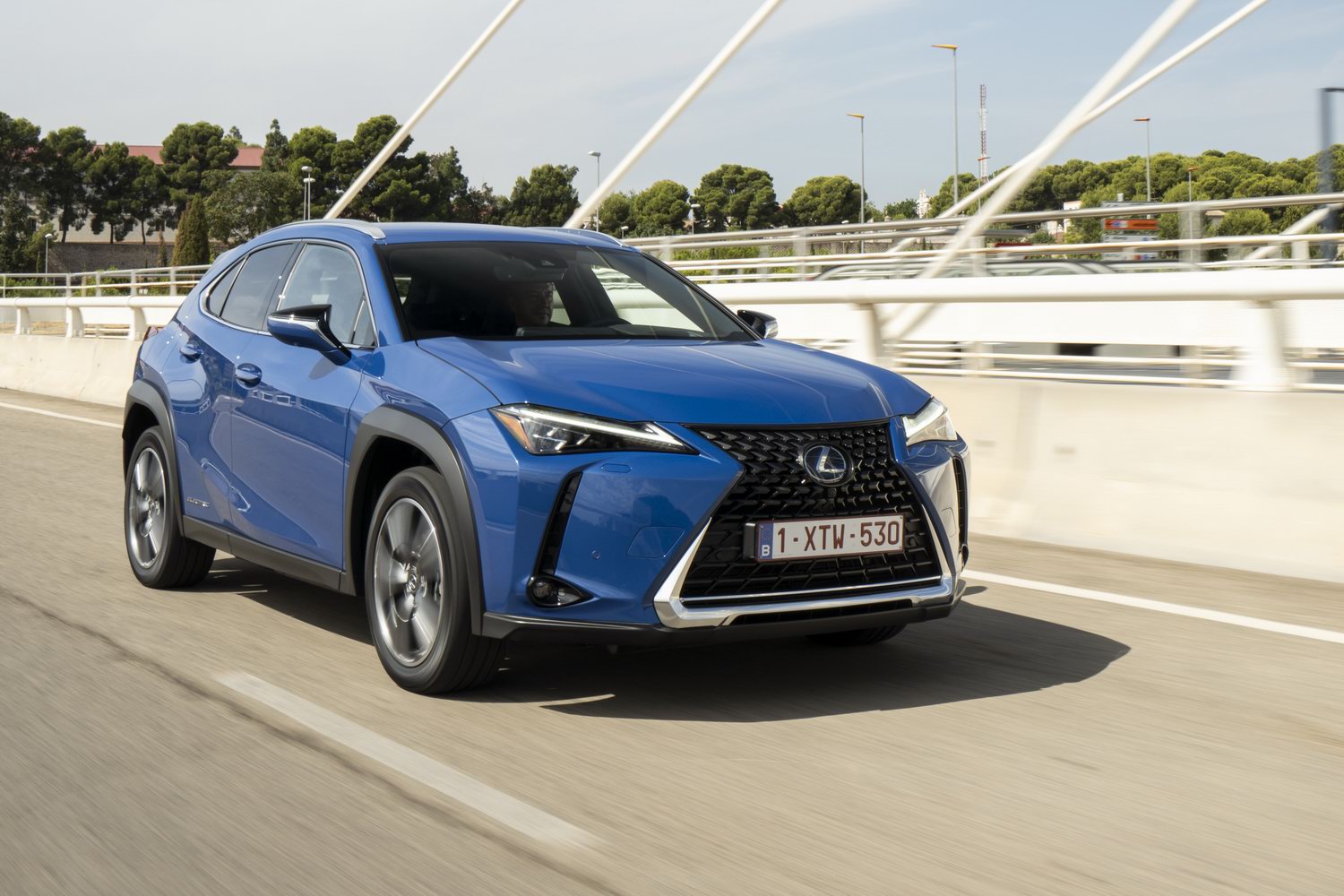There's more to the new Volvo C40 than merely its sloping roofline. It earns the accolade of being Volvo's first exclusively electric car and helps to kickstart the company's move away from using leather in its interiors, too. It also happens to have blistering performance.
In the metal
These days, having one compact SUV simply isn't enough to cater for market demands, so most car manufacturers now also offer sportier looking alternatives with coupe-like rooflines. This is precisely where the new Volvo C40 slots in, as it uses the same underpinnings as the Volvo XC40. Its front end, complete with LED-embellished headlights and Volvo's signature 'Thor's hammer' design', matches the XC40, but as you move rearwards the C40 quite successfully pulls off a very different silhouette thanks to a roof that arcs gently into an angled rear window.
The C40's rear lights give the car a distinctive signature at night as they cascade down either side of the rear glass and wrap around the extremities of the light clusters. When you unlock the car, it plays a little animation to highlight this aspect of the design, too. While Volvo may hint at more of a road bias with the C40's look, it still gets contrasting cladding around the bumpers, wheel arches and rocker panels to give it that lifted off-road appearance.
The lack of a rear wiper arm is compensated to a degree by how air is channelled between a roof spoiler of sorts and a small lip spoiler on the base of the window. In reality, you can see very little in the rear-view mirror, even with the rear headrests tilted forward, so you're almost entirely reliant on the reversing camera when parking.
Opening the electrically operated tailgate reveals a boot space that measures 489 litres (including the underfloor section) and on top of that you also get a further 31 litres of volume in the front underneath the bonnet, should you wish to keep your charging cables separate.
Because of its raked roofline the headroom for passengers in the rear drops to 932mm (in comparison to the XC40's 994mm), but the standard fitment of a panoramic glass roof panel helps maintain a sense of spaciousness. When it comes to legroom there's even less complaint and two adults will comfortably fit in the rear. Both outer seats contain mounting points for child seats and the rear seat backs split and fold down to allow carrying of longer items in the boot.
In the front seats the layout apes that of the XC40, which in turn continues the overall look that graces the rest of the Volvo range. Along with a 12-inch digital instrument display, the Google-based infotainment system is designed to better sync with your mobile device. Having Google Maps as the default navigation system and Spotify built-in will be welcome additions to many.
Volvo has also taken the decision to not use any leather inside the C40 as the company moves towards greater sustainability. It's a positive move that hopefully other car makers will repeat. Adding a brave injection of colour is the option of a 'Fjord Blue' interior carpet.
Driving it
Considering how progressive Volvo has been with regard to improving the safety of cars, and more recently having announced that it will limit the top speed of its cars in a further effort to mitigate the risk of serious injury in road traffic accidents, it seems strange that it would then install a dual-motor setup with an output of 408hp and 660Nm in what is a compact SUV. It could be argued that the impressive accelerative ability (0-100km/h in 4.7 seconds) can help drivers get out of certain situations, but it nonetheless seems like performance overkill, for want of a better phrase.
That aside, yes, the C40 is a very fast but also a very capable machine. Being able to drive all four wheels and having a low centre of gravity due to the placement of its battery in the floor, means that the Volvo is very surefooted, planted and, when not slingshotting you towards the next bend, feels incredibly stable at more civilised pace. It gives you the sensation of its chassis being hewn from a solid billet of some mythological Norse material and does a very good job of deflecting road and wind noise from permeating the interior. In many ways it feels every bit the premium car that it's €68,950 price tag suggests it should. That's probably the most difficult aspect of the C40 to swallow, as the rest is entirely agreeable.
Volvo quotes a WLTP driving range of up to 444 kilometres on a single charge, but if you continually tap both motors for all their worth that figure will take quite a nosedive. During some motorway driving the real-time consumption figure varied by as much as 10kWh/100km when increasing the speed from 100km/h to 120km/h, indicating just how much of a difference higher-speed driving can make with an electric car. Thankfully the C40 is capable of DC charging at up to 150kW, where it will take as little as 37 minutes to bring the battery back up to 80 per cent from 10 per cent.
Off the motorway and into the urban environment demonstrates the effectiveness (or severity depending on your viewpoint) of the C40's one-pedal drive. When activated, the car will dramatically shed speed when you lift off the accelerator pedal in a bid to recuperate as much energy as possible. You quickly get used to it and you begin to use the right pedal more like a potentiometer, so even in traffic you rarely need to use the actual brake pedal, though this is something that drivers must remain vigilant of as it won't completely stop the car in an emergency.
If that isn't your thing, it can be deactivated and the car will effectively freewheel when you lift off the accelerator, but it's one or the other and we think Volvo has missed a trick by not allowing drivers to choose from different levels of recuperation.
The rest of the driving experience is what you might expect from an upmarket electric SUV; it soaks up lumps and bumps very well and doesn't feel cheap in any aspect. Perhaps the single biggest downside of the C40 over the XC40 is that its design means that rearward visibility is reduced to an almost pointless degree, and that's before you fill the rear seats with people.
What you get for your money
The starting price of €68,950 for the Volvo C40 may cause some buyers to wince, but the better news is that there will be a more affordable single-motor variant of the C40 coming down the line and that should also be capable of a slightly longer driving range.
Volvo Ireland is still finalising the specification and equipment grades, but these are expected to mimic what is currently available on the XC40. That consists of three versions - Core, Plus and Pro - that are covered by a €7,500 bracket from entry to top spec. When Volvo confirms what the make-up of the C40 range will be in Ireland for 2022, this section will be updated.
Summary
The Volvo C40 is a somewhat predictable addition to the company's line-up, though quite how many people will choose its slightly less practical shape over the beautifully boxy XC40 remains to be seen. Functionality aside, it delivers an impressive drive that is as potent as it is polished, while quick charging and an abundance of safety assistance systems will no doubt reassure buyers who will be transporting their most precious cargo. If you love the look more than the outright pace, then it might be worth holding out until the more sensible single-motor version comes along.


























